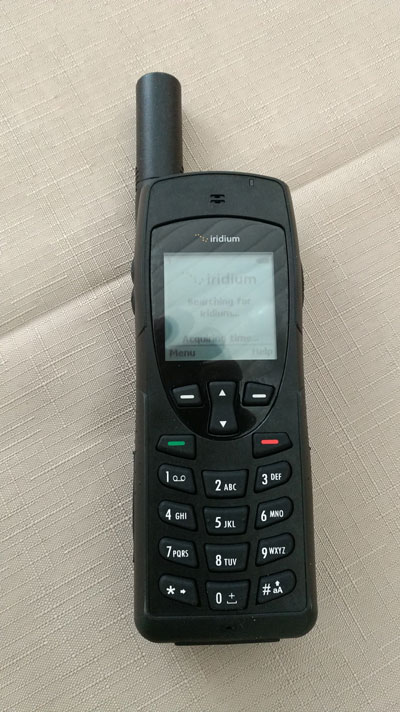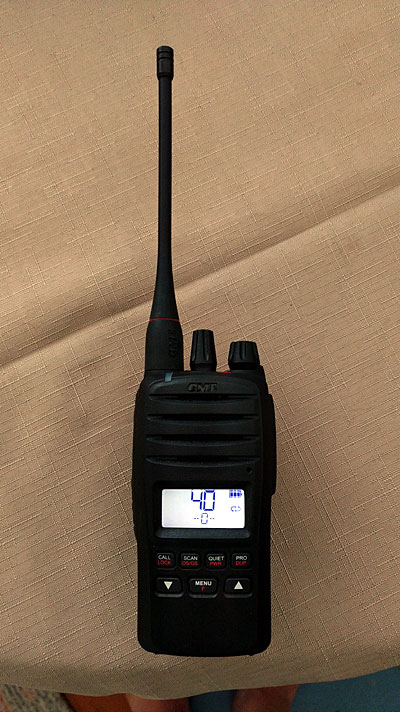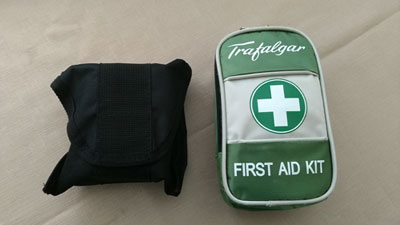Safety in the bushPreambleThe Australian bush is a wonderful place. I've been exploring it for more than 40 years, almost trouble-free and pretty much have no regrets. What's more, I will continue to do so, with the hope I always come home with memories I will keep forever. However, there are some things to plan for and things to watch for when you are out of town. There is a lot of misinformation on social networks that give the bush a bad reputation, including but not limited to the various tales that Australia is packed with animals that kill first and ask questions later. Australia does have its fair share of dangerous animals but most will leave you alone if you leave them alone. Some exceptions include various species of sharks and crocodiles, who usually attack humans only because they think we are food. But again, stay away from them and they cannot harm you. This article is more about what to do to prevent trouble than what to do to react when trouble strikes. We will go through the basics and if you consider these issues carefully there is no reason why you cannot go into the bush and come out of it in perfect safety, with your own memories to keep forever. Planning aheadWhen heading away, I don't always plan what I will be doing and when, as for me, this can often lead to disappointment if plans need to change because of the weather, for example. The planning is more along the lines of communication. I always tell a relative where I am going and the date on which I will return. This allows that person to raise the alarm should I not be back on time. To allow for things like a basic vehicle breakdown or traffic snarls, we agree to an eight hour timeframe between starting to worry and calling the police. Calling the police may sound drastic but think of this - which organisation has the largest communications network across the state and which organisation has the most members? Which organisation has cars on the road with cameras that can scan number plates. If you have stopped for a drink on the way home and someone steals your car (with your only means of communication in the centre console) the thief has a good chance of being caught, even if they have abandoned the car and are back at home lounging about. That's just one of many scenarios. CommunicationWhen trouble lies ahead, communication is the key to survival. If I go on a hike in an area close to Sydney or I am travelling only on major highways between Sydney and a regional centre, I am not as concerned about it as there will still be mobile phone reception. A quick call saves the day if your car breaks down or you do something silly like run out of petrol. If I am travelling into a national park, state forest or a remote area I step it up a bit and take a satellite phone and a portable CB radio. My car also has a CB radio fitted and this is handy for monitoring road conditions ahead, as professional truck drivers always talk to each other, warning of hazards ahead, or the presence of the highway patrol, so speeding fines can be avoided. Satellite Phones There are several satellite phone suppliers in Australia and it is also possible to hire them, as they are expensive to buy and expensive to run. I chose to buy one as I need to take one on several trips per year and there is less messing about with ownership than hiring. There are a couple of things that a user needs to keep in mind with satellite phones. The first is that they are energy users. Most mobile phones will go for several days on one charge. Satellite phones do not and must be recharged every 24 hours just like the mobile phones of 20 years ago. This must be done even if no calls are made. On the subject of calls, you won't be making many, if any at all except for an emergency unless you are quite wealthy and money isn't an object. Call costs mirror the mobile phone plans of the early 1990s and a five minute call will cost about ten bucks. Hint: save satellite phones for emergencies only. The more you chat socially, the more it will need recharging. There are two types of connection available in Australia on the Iridium network. You can get an international SIM card which provides you with a number starting with the country code +88, followed by a very long number. This is slightly cheaper providing you only plan on calling people you know. The downside is that you cannot dial 000 if there is a life-threatening emergency. The way out of this problem is to obtain an Australian SIM card which comes with an Australian number, similar to a mobile phone number. I use Telstra, which provides a number in the format 0147 XXX XXX and a phone with one of these SIM cards can be used to make 000 calls. If you are like me and are on call as a part of your employment, having an Australian number can allow your employer to contact you, bypassing any restrictions on international calls placed on their phone system. Because of the very long distance between your phone and the satellite network, there is a delay of about 1 second between yourself and the person you are talking to. One last thing to keep in mind about satellite phones - ignore the advice to the contrary, they only work if you are outside and the phone's antenna has line-of-sight to the satellite the phone is logged in to. The misinformation that tells you a satellite phone will work indoors is mostly false. Do not depend on it. If you need to make a call, go outside. One exception is that if you are in a car and the phone is plugged into an external antenna. The satellites are 750km out into space so the phone has to work fairly hard even to maintain a connection when outside. The good thing is, a satellite phone will work anywhere in Australia, providing there is a clear line-of-sight to the satellite. CB radios The good thing about CB radios is that they are readily available and can be installed easily. If you buy a handheld CB, they work out of the box providing the battery is charged up. Whilst every professional truck driver will use one and many 4x4 drivers will have one, it is important to remember that the average Joe doesn't have one and this can limit their effectiveness as a communications tool in an emergency. CB radios (both UHF and AM) are also limited to about 10km of range. The range of a CB radio will depend on several factors such as the quality of your radio, the quality of your antenna, if your antenna is the correct type for your radio and its installation method. Even if your rig has been set up correctly, it won't mean the other person's rig has. For better or worse, many or even most have shifted from AM to UHF for CB communication. If you are new to CB, buy a UHF radio. If you do not know what you are doing or what to go for in terms of specification, get a radio installed professionally or purchase a hand-held CB. Always buy a reputable brand. Australian-made CBs are available from GME, which is pretty much the best brand available in Australia, though there are other good brands. Do your own research before spending money. Buy a base-loaded antenna unless you have a special reason not to, as an antenna that isn't base-loaded will require a ground plane for good communication, which will mean it has to be installed in the middle of the roof of your vehicle. Base-loaded antennas can be installed anywhere, within reason. The channel you use will be important too. On an AM CB, Channel 9 is the emergency channel. Channel 8 is the highway channel. Channel 11 is the call channel for non-urgent or social communication. On a UHF CB, Channel 11 is still the call channel, Channels 5 and 35 are the emergency channels and the highway channel will depend on the road you are on. Generally, Channel 29 is the highway channel on Highway 1 (all roads posted 1, A1 and M1) and Channel 40 is used on most other roads. Channel 18 is used by many caravanners and those operating 4x4s. Volunteer CREST stations operate for the purpose of monitoring the emergency channels for distress calls. It is an offence to conduct social discussions on these channels and they must be kept free for emergency calls only. Like any communications service, there are places where a distress call from a CB will not be responded to, simply because your transmission will not get picked up. This is why having more than one method of communication is important. First aid Whether I go on a hike for an hour or two or head into a remote area on a camp lasting several days and nights, I take the same three basic pieces of safety equipment. The first is a basic first aid kit. You do not need anything that is too big, has too much in the way of supplies or is difficult to carry. The one pictured is what I take everywhere and includes bandaids, plasters, a few assorted bandages, a triangular support bandage for shoulder and arm injuries and some saline for washing eyes and antiseptic gel for sterilising a cut. This kit doesn't come with a space blanket but I have obtained one of these separately and included it. One could easily ague the more the merrier but the bottom line with first aid kits is that they are seldom used and whatever you buy will lead to the kit's contents expiring before you get the need to use any of it. If you have special needs, by all means, you will need to accommodate them. These can include medications for epilepsy, diabetes, asthma and other chronic illnesses and diseases. Planning for these is necessary because in remote areas there is generally nowhere to obtain these medications. The second item I take is a snake bite kit. It contains only three things but this is generally all you will need in the event of a bite from any Australian venomous snake. It contains a triangular bandage to assist with limb immobilisation and two 100mm bandages to make a pressure immobilisation bandage with, to slow the movement of venom. The treatment for any snake bite is the same as that for the funnelweb spider - wrap the 100mm bandage around the limb from the hand or foot upwards toward the body with firm and even pressure but not too tight. The aim is to reduce intramuscular movement of the venom rather than cutting off intravenous blood circulation. More information on this can be found here. Never give a victim of a spider or snake bite, or anyone suffering a serious injury anything to eat or drink or provide oral medications such as pain killers. This could restrict or hold back the ability for hospital staff to operate on the victim or administer other medications or treatment if this is needed. One other thing to remember with a snake or spider bite is that some species may strike with a 'dry bite' on the first bite, where no venom is administered, however from a first aid perspective it is important never to assume this has happened. Always treat all bites as venomous and potentially lethal and deal with them accordingly. BeaconsThe third item I carry at all times is an EPIRB beacon. These are more portable and less costly now than ever before and there really is no excuse for not having one. Beacons, also known as personal locator beacons, can also be hired from some police stations if venturing out into the bush will not be a regular occurrence however I do recommend ownership. In the digital age, beacons must be registered for them to work. If an unregistered beacon is triggered, it is likely that a response will not occur. Registration is with the Australian Maritime Safety Authority and is free and comes with many benefits including that your call will receive a response from emergency services but at the same time, the AMSA will notify the next-of-kin on your registration and also note any medical conditions you have declared, which means the response provided to you in an emergency will be tailored to your needs. Safety In The Bush Continued... |
Members Sidebar |
